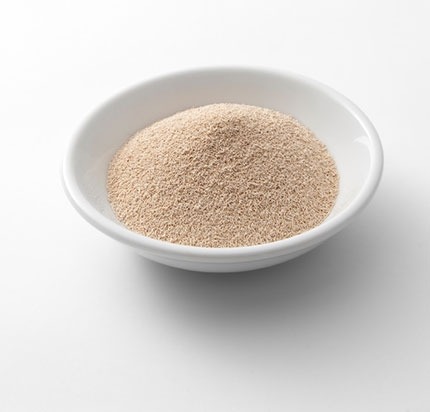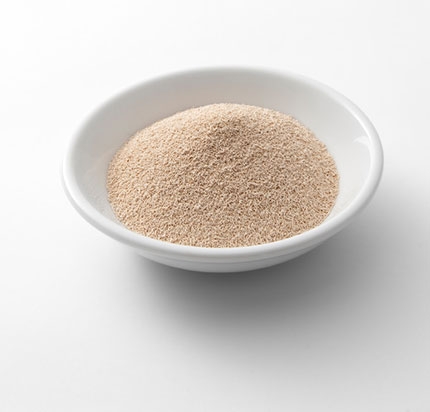Making The Perfect Pizza Dough
It all comes down to a solid base; whether you're talking about a building, painting, or pizza. If you want a good-tasting pie, you have to master the dough. There's just no way around it.
But making your own pie can be intimidating — there's the yeast (it's alive!) and figuring out how to roll it out without overhandling or tearing it. We've already told you how to perfect the pie, so now we are focusing on the basics: making the perfect dough.
We've turned to Jeff Mahin, chef and partner at Stella Rossa Pizza Bar, who offered fantastic and helpful tips so that you'll be set each step of the way. From the quality of the water you use to properly folding the dough, he sets you up for success. Plus, he adapted his pizza dough recipe from the restaurant for home cooks so that anyone can make delicious pie at home.
 And once you've gotten the base down, you can experiment with different toppings and sauces so that this basic pie never gets boring and will become a go-to dinner staple in your household.
And once you've gotten the base down, you can experiment with different toppings and sauces so that this basic pie never gets boring and will become a go-to dinner staple in your household.
Check out his tips below and let us know how your pie turns out!
1. A Word on Ingredients
While some dough can have numerous ingredients like oil, butter, sugar, eggs, various enhancers, and stabilizers, for me, true pizza dough consists of four simple ingredients: flour, water, yeast, and salt. These are the building blocks of the ideal crust. With that said, being that there are only four ingredients, it is of the utmost importance that their quality is top notch.
The Flour
At Stella Rossa Pizza Bar, we worked exhaustively with our local farmers to grow, mill, and blend the specific flour we use in our dough, because the dough is the most important part of the pizza — the cornerstone, if you will. The type of flour you choose will ultimately dictate the texture and flavor you end up with. For the home baker, I would recommend using organic unbleached bread flour. You want one with a protein percentage of about 12-13 percent, as this will allow you to have a crust that is airy, crispy, and chewy.
Water
While you can use any old tap water, I would strongly recommend filtered water. Water varies from area to area, so while a recipe may work great in California, it might not work in New York — have you had a good New York bagel outside of the grand NYC? Exactly my point.
Salt
Salt is also important for the overall process of the dough, as well as for the end flavor. If you add too little salt to your dough, you will have flat, almost watery tasting dough. On the other hand, if you add too much salt, the obvious happens and your pizza dough is salty. Point being, make sure you are adding just enough salt to the dough because it is an essential component.
Yeast
You can approach this in so many ways. The more advanced techniques include natural leavened starters — poolish, bigas, and so on — as these are all created to impart more flavor and structure into the dough itself. While in the restaurant we have systems and time schedules to maintain our starter, at home I would recommend fresh or instant yeast and a longer fermentation.
2. Fermentation
Many people advertise that dough requires 24-plus hours to make. What they don't say is that for much of that time, the dough is simply sitting in a container. Take for example our process at Stella Rossa Pizza Bar. We allow our dough to "bulk ferment" or rest, for at least 24 hours. The reason for doing this is to create a better flavor and overall structure of the dough. You can do this at home by simply putting the dough in a container at least twice the size of the dough, covering it, and placing it in the fridge.
3. Folding the Dough
Folding the dough correctly is often overlooked by many home bakers, but is an important part of the overall process. I am sure at some point in your home baking career you have heard the term "punch down the dough." While this works, there is a better way.
Once the dough is mixed, place it into a large, clean container (at least twice the size of the dough), cover it with plastic wrap, a wet cloth or a lid, and allow it to double in volume. Once it has, carefully remove the dough and place it on to a lightly floured surface. Press the dough down, try to make a rectangle, and then fold it, like you would fold a letter. Place the dough into the container, rewrap it and allow it to sit out for about 30 more minutes in the fridge. This will again help with its structure. This technique works the dough like mixing, while also manipulating it to rise more uniformly.
4. Baking the Dough
While pizza stones are fine and dandy, you're better off with cast iron or a ½-inch thick slab of steel. Steel retains heat much better than store-bought pizza stones. When you slide a pizza onto the steel, it drops less in temperature, keeping your oven hotter, and giving you a better pizza.

